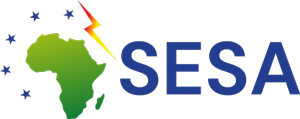D2.1 SESA Capacity Building Plan
D2.1 SESA Capacity Building Plan
The aim of the plan is to provide an overview of the capacity building programme. It will be a single document resulting from the capacity and skills needs assessment on energy use in partner cities with all relevant stakeholders presenting a sound and tailored learning plan. The capacity plan will outline the learning topics/themes, the sequence, location and timing of training, capacity and skills building activities; the implementation of which will result capacity building, city-to-city cooperation and professional development
Executive summary
The Capacity Building Plan, developed through Smart Energy Solutions For Africa (SESA) project, intends to assist the SESA project and its partners and the local communities engaged to strategically identify capacity and skills development topics, methods and tools to support a further uptake of sustainable energy use in selected urban and rural areas in Africa known as “Living Laboratories” (“Living Labs” in short). The project Living labs are real-life test beds for innovative energy solutions, which will enable the project to experiment in different environments. The urban and rural areas under discussion are as follows: Kisumu and Homabay, Kenya (Demonstration Living Lab); Ga North Municipal Assembly and Atwima Nwabiagya, Ghana (Validation Living Lab); Alicedale, South Africa (Validation Living lab); Rural areas, Malawi (Validation Living Lab) and lastly, Marrakech, Morocco (Validation Living lab).
The Capacity Building Plan is informed by comprehensive capacity and skills needs assessments on energy use undertaken in five Living Lab countries mentioned above. The needs assessments for Ghana, Kenya, Malawi, Morocco and South Africa will use qualitative research methods to 1) Assess the present capacity of local innovators and authorities on Sustainable Energy Development 2) Understanding the future capacity (desired state) based on the city’s vision for the Sustainable Energy Use, 3) Identifying gaps between present capacity and future desired skills, and 4) Selecting tools and training modules to fill these gaps.
This Capacity Building Plan consists of five chapters. Chapter 1 presents an overview of the Capacity Building Plan and its position. Chapter 2 describes the methodology used to develop the capacity needs and assessment and therefore the Capacity Building Plan, including the research methods, ethical consideration and limitations. This is followed by the capacity and skills needs assessments for Kenya, Malawi, Ghana, Morocco and South Africa in Chapter 3. The capacity and skills needs assessments for each country in Chapter 3 details the following: an overview of the country context and background; SESA’s Living Lab project sites in the country; The countries energy governance structure; the various policies, plans and strategies that are relevant to the country’s energy landscape; the present capacity of local innovators and authorities on sustainable energy development; the future capacity (desired state) based on the Living Lab’s city vision for the sustainable energy use; the gaps between present capacity and future desired skills identified; and the relevant tools and training modules to fill the gaps. Chapter 4. outlines the next steps to be undertaken for the Capacity Building Plan as well as the timelines for these steps. The concluding remarks together with some recommendation are provided in Chapter 5.



Recent Comments